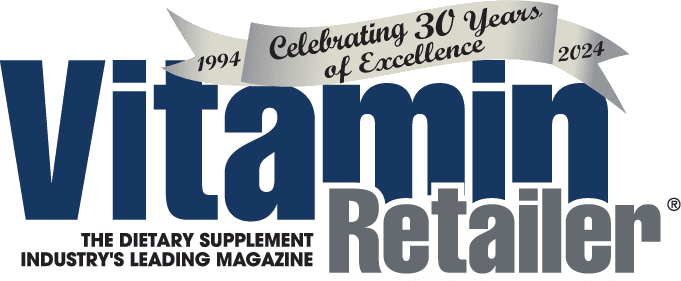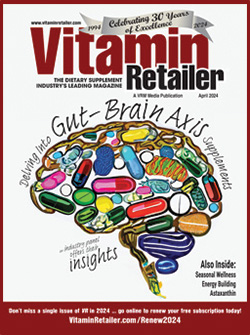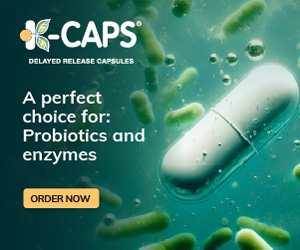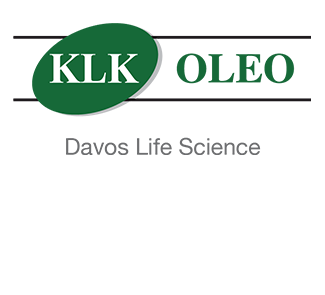Does it seem to you that Alzheimer’s disease (AD) is increasingly common? That you have loved ones who are either struggling with serious memory changes themselves, or their older relatives are? That everywhere you look in the media, there are stories about Alzheimer’s?
You are not mistaken. According to the Alzheimer’s Association, “The number of Americans living with Alzheimer’s disease is growing — and growing fast. An estimated 5.4 million Americans of all ages have Alzheimer’s disease in 2016. One in nine people age 65 and older has Alzheimer’s disease. By mid-century, someone in the United States will develop the disease every 33 seconds.”
It is also important to understand that AD is a fatal disease. It kills more people than breast cancer and prostate cancer combined, and is the sixth leading cause of death in America. It causes death by destroying brain function. It is sobering to note that one in three seniors dies with AD or another form of dementia, even if their death is immediately attributable to another cause, such as heart disease or cancer. And by 2050, rates are expected to nearly triple.
One could argue that these rates are rapidly rising because more people are living longer. It is true that age is a risk factor for AD and other forms of dementia. However, longer life is not the only reason we are seeing these astounding increases. Factors that influence AD risk are certain anti-choline prescription drugs (found especially in sleep, allergy and urinary urgency products), high blood sugar, head trauma, history of major depression, cardiovascular issues, smoking, lack of physical activity, excessive level of alcohol consumption and the consumption of Frankenfoods that bear no resemblance to the more wholesome meals of our great-grandparents.
At first glance, it may be difficult to see what these risk factors have in common. Yes, they are not healthy practices, but in what way are they promoting AD? Aside from genetic and epigenetic factors, I believe it comes down to three basic aspects of brain health: chronic inflammation, oxidative stress and impaired detoxification. Ongoing exposure to these three elements creates brain changes that interfere with the architecture responsible for problem solving, recognition, judgment and memory. So while it would be cruel to infer that if we just address these three areas, we can cure this dreadful disease once and for all, it is important to note that by modulating these processes, improvements in prevention and slowing the decline of the disease is entirely possible.
Curcumin and Vitamin D
Perhaps the most promising natural intervention for prevention and also for slowing the progression of AD is curcumin, because it addresses all three key etiological factors. Additionally, curcumin has been shown to improve insulin sensitivity and reduce factors associated with hyperglycemic damage. High blood sugar creates damage to blood vessels that initiates an inflammatory reaction. It also can cause oxidative stress to the sensitive brain tissue. One researcher has called Alzheimer’s “diabetes of the brain,” because people with diabetes have much higher rates of AD and also other forms of dementia.
There are two other areas of curcumin’s unique activity with direct application to AD. The first is the ability of curcumin to stimulate the creation of new brain cells, particularly in the hippocampus, which is the seat of memory in the human brain. This process is called neurogenesis. The second is its ability to stimulate macrophage activity to destroy beta amyloid plaque, a hallmark protein that creates brain plaques that interfere with proper functionality.
While curcumin is powerful on its own, recent research has found that curcumin combined with vitamin D may be even more powerful in its anti-plaque benefits. It is also interesting that, when compared to people who have optimal levels of vitamin D, people with low levels of vitamin D at age 65 are more than twice as likely to experience mental decline.
A study published in 2009 found that these nutrients work especially well together to stimulate the immune system to clear the brain of the plaques which are believed to be the cause of AD. In another study, scientists at University of California called curcumin “anti-amyloid” for its ability to overcome the beta-amyloid protein. In an animal study, curcumin reduced substances believed to cause plaque by 43 to 45 percent. Some researchers have suggested curcumin binds directly to plaques and eliminates them.
In a human AD study published in the Journal of Psychopharmacology, patients were given either a placebo or high absorption curcumin with turmeric essential oil called BCM-95. Researchers commented on the resulting increased levels of beta amyloid in the bloodstream as indicative that the beta-amyloid plaque formations in their brains were dissolving and the bloodstream was carrying them away for waste disposal. Though complications in the study reduced significance, this trend is very encouraging.
Research on curcumin continues, but the results are already a quite powerful argument to include this supplement in every healthy brain aging protocol.
Curcumin vs. Turmeric
It is surprising how much confusion remains in the natural products industry regarding the properties of curcumin compared to the spice, turmeric. Though turmeric is a healthy food, it does not absorb well and contains very little curcumin (only about 2 to 5 percent). It is virtually impossible to achieve the blood levels of curcumin demonstrated as effective in published studies using turmeric. The equivalence would be hundreds of capsules per day.
Curcumin is hard to absorb as well. Early studies used as much as 10 to 12 grams (20 to 24 capsules) and this is not practical for most people. When I am talking with patients and customers, I encourage them to first review the human clinical research and second, consider how many capsules per day are needed to equal that data. There are curcumin products on the market that now can deliver these dosage equivalents in two capsules per day via a variety of absorption systems.
The forms of enhanced absorption curcumin listed on PubMed, the electronic database of the National Institute of Health, as used in human studies on reducing risk factors for AD or use in patients with AD, include lipidated curcumin, an unspecified curcumin, and BCM-95 Curcumin with turmeric essential oil.
Rosemary and Spanish Sage Essential Oils
Oils from rosemary (Rosmarinus officinalis) and Spanish sage (Salvia lavandulifolia) plants have a long history of use as aids to enhancing memory and learning. In fact, rosemary is called “the herb of remembrance,” and modern science has shown it is a powerful antioxidant, meaning that it can neutralize free radicals that damage or even destroy brain cells.
Both rosemary and Spanish sage oils slow down the activity of the enzyme acetylcholinesterase, which breaks down the neurotransmitter acetylcholine. Acetylcholine is a messenger in the brain, carrying information between brain cells and supporting memory and learning and low levels of acetylcholine are associated with AD. Preventing it from being broken down and eliminated keeps more acetylcholine active in the brain longer. These oils are considered natural acetylcholinesterase inhibitors. There are also pharmaceutical drugs that are acetylcholinesterase inhibitors, but they often come with unpleasant side effects and have minimum effectiveness. These oils are effective, but without the serious adverse effects. In clinical tests, healthy volunteers who took Spanish sage oil experienced improved memory and recall. When this plant oil was given to people with AD, their attention and focus improved and many of their other symptoms were reduced. Both oils can play an important role in healthy brain function.
Active Glutathione
Glutathione is the major antioxidant of the central nervous system, which includes the brain. It has been shown that active glutathione levels decrease with age and certain diseases, of which AD is one. Researchers have suggested that improvement in levels of active glutathione will significantly improve brain function, but research on supplemental glutathione and neurological diseases is in its infancy because it is not easy to boost levels in the blood stream. This is one antioxidant you can’t get from food—your own body has to make it. Unfortunately, the digestive process turns active glutathione into the inactive form even when it is enteric coated, an inactive glutathione is not useful. Active glutathione is very effective when administered intravenously for a wide variety of neurological concerns, including Parkinson’s disease, which itself can lead to dementia.
Some integrative practitioners use N-acetylcysteine (NAC) to boost glutathione to avoid these absorption challenges. NAC is a raw material used by the body to make glutathione. It is useful in younger and healthier people, but research has shown that older adults, especially those with chronic diseases, are not able to make glutathione efficiently. Their glutathione-making machine is impaired. It is estimated that, by age 65, glutathione production can be reduced as much as 50 percent. Therefore, bypassing the failing mechanism of glutathione creation is often necessary, meaning the use of active glutathione to boost these levels.
There are newer oral delivery systems that show great promise in unique ways to boost active glutathione in the body, but make sure any you select are clinically studied and have data showing they raise active, not inactive, levels of this crucial compound. Two forms that have published human studies showing improvements in overall glutathione levels are the French sublingual form (called Sublinthion) and the liposomal form (sold under a variety of product names). However, levels may be misleading if the amount increased is not in the active form, so reviewing research prior to use is important in selecting an effective product.
Summary
There are certainly other supplements that are important in promoting brain health and preventing Alzheimer’s. Omega-3 fatty acids from fish, green tea, olive oil, ginkgo, apoaequorin, vitamins C and E, and so many more nutrient factors that space precludes exploring, can also play a crucial role in keeping the aging brain healthy. Reducing inflammation, oxidative damage and promoting excellent detoxification by adopting a healthy lifestyle and starting a regimen of clinically effective supplements may be the most effective Alzheimer’s prevention and treatment protocol available today. VR
References:
Alzheimer’s Association. Available at: www.alz.org/facts/. Accessed 8/1/16.
Search of PubMed, electronic database of the NIH, on human curcumin clinical trials and Alzheimers. Available at: www.ncbi.nlm.nih.gov/pubmed/?term=human+curcumin+clinical+trial+alzheimer%27s accessed Aug. 5, 2016.
Goozee KG, Shah TM, Sohrabi HR, et al. Examining the potential clinical value of curcumin in the prevention and diagnosis of Alzheimer’s disease. Br J Nutr. 2016 Feb 14;115(3):449-65.
Masoumi A, Goldenson B, Ghirmai S, et al. 1alpha,25-dihydroxyvitamin D3 interacts with curcuminoids to stimulate amyloid-beta clearance by macrophages of Alzheimer’s disease patients. J Alzheimers Dis. 2009;17(3):703-17.
Goel A, Jhurani S, Aggarwal BB. Multi-targeted therapy by curcumin: how spicy is it? Mol Nutr Food Res. 2008;52(9):1010-30. Aggarwal BB, Sundaram C, Malani N, Ichikawa H. Curcumin: the Indian solid gold. Adv Exp Med Biol. 2007;595:1-75.
El-Moselhy MA, Taye A, Sharkawi SS, El-Sisi SF, Ahmed AF. The antihyperglycemic effect of curcumin in high fat diet fed rats. Role of TNF-α and free fatty acids. Food Chem Toxicol. 2011;49(5):1129-40.
Na LX, Zhang YL, Li Y, et al. Curcumin improves insulin resistance in skeletal muscle of rats. Nutr Metab Cardiovasc Dis. 2011 Jul;21(7):526-33.
Seo KI, Choi MS, Jung UJ, et al. Effect of curcumin supplementation on blood glucose, plasma insulin, and glucose homeostasis related enzyme activities in diabetic db/db mice. Mol Nutr Food Res. 2008; 52(9):995-1004.
Gupta SK, Kumar B, Nag TC, et al. Curcumin prevents experimental diabetic retinopathy in rats through its hypoglycemic, antioxidant, and anti-inflammatory mechanisms. J Ocul Pharmacol Ther. 2011; 27(2):123-30
Peeyush KT, Gireesh G, Jobin M, Paulose CS. Neuroprotective role of curcumin in the cerebellum of streptozotocin-induced diabetic rats. Life Sci. 2009;85(19-20):704-10.
Kulkarni SK, Dhir A. An overview of curcumin in neurological disorders. Indian J Pharm Sci. 2010;72(2):149-54.
Garcia-Alloza M. Curcumin labels amyloid pathology in vivo, disrupts existing plaques, and partially restores distorted neurites in an Alzheimer mouse model. J Neurochem. 2007;102:1095-1104.
Martins R. Evaluation of the nutritional extract Bio-curcumin (BCM-95) to preserve cognitive functioning in a cohort of mild cognitively impaired (MCI) patients over 12 months. Edith Cowan University. Joondalup, Western Australia. In process.
Sanmukhani J, Satodia V, Trivedi J, Patel T, Tiwari D, Panchal B, Goel A, Tripathi CB. Efficacy and safety of curcumin in major depressive disorder: a randomized controlled trial. Phytother Res. 2013;28(4):579-85.
Benny M, Antony B. Bioavailability of BioCurcumax (BCM-095). Spice India. September, 2006 :11-15.
Tildesley NT, Kennedy DO, Perry EK, et al. Salvia lavandulaefolia (Spanish sage) enhances memory in healthy young volunteers. Pharmacol Biochem Behav. 2003 Jun;75(3):669-74.
Cheryl Myers is an integrative health nurse, author and an expert on natural medicine. She is a nationally recognized speaker who has been interviewed by the New York Times, Wall Street Journal and Prevention magazine. Her many articles have been published in such diverse journals as Aesthetic Surgery Journal and Nutrition in Complementary Care, and her research on botanicals has been presented at the American College of Obstetrics and Gynecology and the North American Menopause Society. Myers is the head of Scientific Affairs and Education for EuroPharma, Inc.








